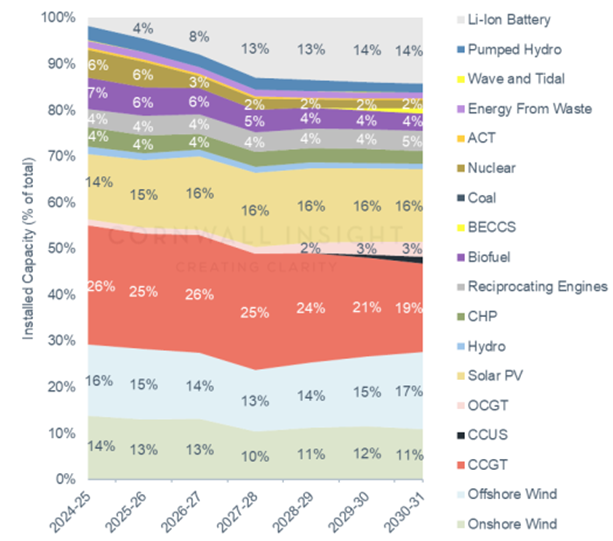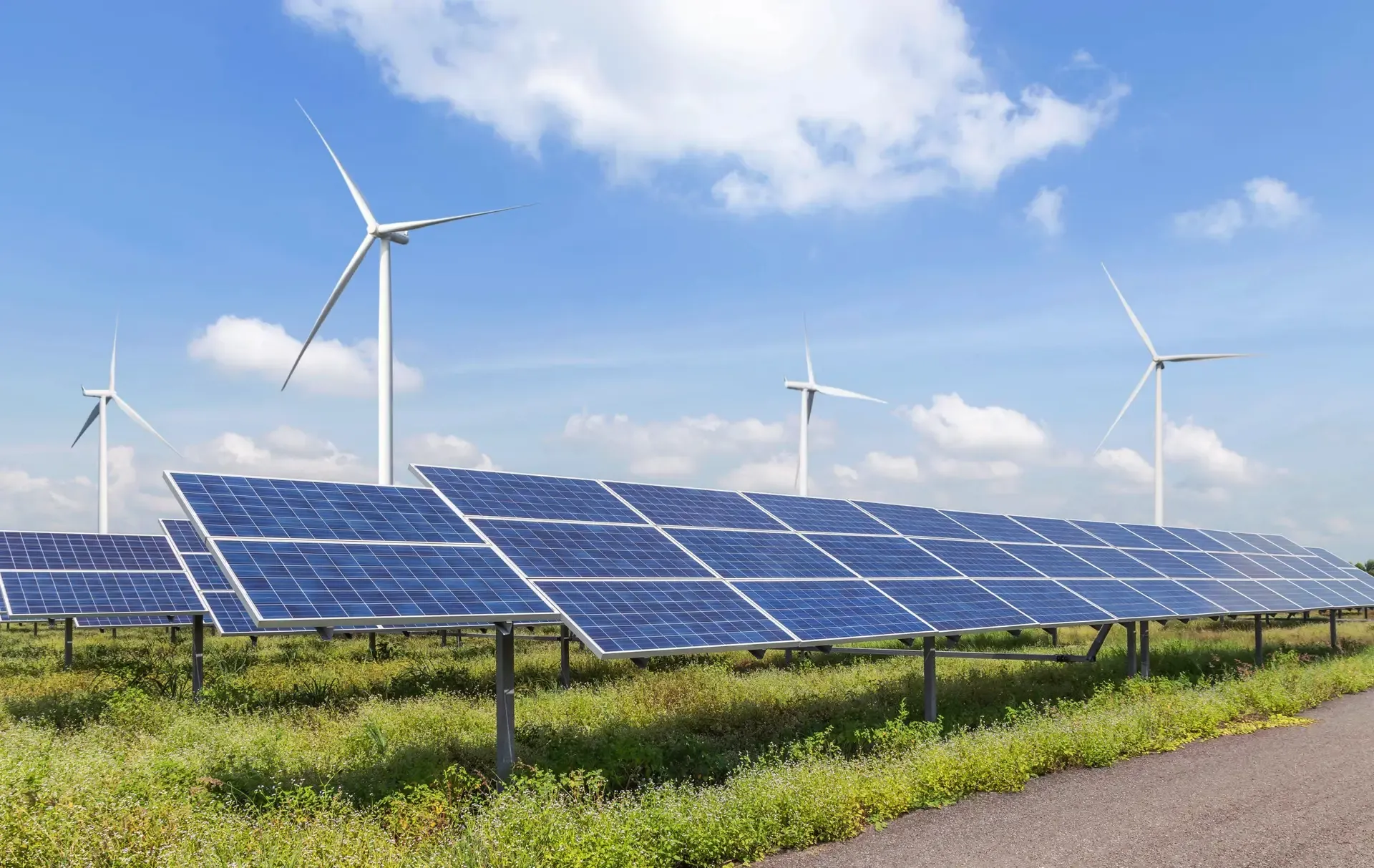"While the underlying goal to decarbonise the power system is one that many would agree is crucial for the country's future, the gap between our current trajectory and the new government’s 2030 target is substantial."
Tom Edwards Principal Modeller
Cornwall Insight’s latest Benchmark Power Curve forecast shows that solar, onshore and offshore wind are currently on schedule to account for just 44% of Great Britain’s electricity generation by 2030. This is a significant shortfall from the 67% needed for a fully decarbonised electricity system, as projected by our modelling experts.
This is going to make the new government’s ambitious pledge to deliver a zero-carbon power system by 2030, a substantial challenge. Their plans to double onshore wind, triple solar power, and quadruple offshore wind capacity would require extensive increases beyond current 2030 projections: adding 35GW to onshore wind (17GW above projected levels), 50GW to offshore wind (27GW above projections), and 55GW to solar (10GW above projections).
Their plans will face substantial challenges, particularly with funding, supply chain issues, grid connections, and port capacity.
Cornwall Insight’s modelling predicts that an additional £48bn will be needed on top of the £18bn the current infrastructure buildout is already predicted to cost to meet the government’s ambition. Therefore, attracting that investment into the country is going to be critical to delivery. Increased funding for schemes such as Contract for Difference (CfD) might attract more business by providing greater returns, but significant global bottlenecks remain.
The path to a fully decarbonised power system would also demand a dramatic increase in storage deployment, especially for longer duration storage and hydrogen. While there has been a pledge to increase capacity, no firm commitments have been made.
Figure 1: Future electricity generation capacity breakdown

Source: Cornwall Insight, GB Benchmark Power Curve
Tom Edwards, Principal Modeller at Cornwall Insight said:
“Our findings highlight the urgent need for a step change in Great Britain’s approach to renewable energy capacity delivery. While the underlying goal to decarbonise the power system is one that many would agree is crucial for the country’s future, the gap between our current trajectory and the new government’s 2030 target is substantial. Without significant intervention, we risk falling far short of the decarbonisation goals.
“Increasing the attractiveness of the CfD scheme for renewables schemes by increasing budgets or Administrative Strike Price caps is likely to draw in more developers, as the potential for better returns makes investing in GB a more attractive prospect. However, this is only one piece of a large and complicated puzzle. International competition for project development coupled with material shortages are challenging issues that often lie beyond a government’s control. Additionally, updates to grid connections, increased storage and a whole plethora of other policy changes will be needed to make a 2030 zero-carbon power system a realistic target.
“The swift actions of the new government, such as lifting the de facto ban on onshore wind, are encouraging. However, much more needs to be done to turn decarbonisation promises into a reality.”
– Ends

